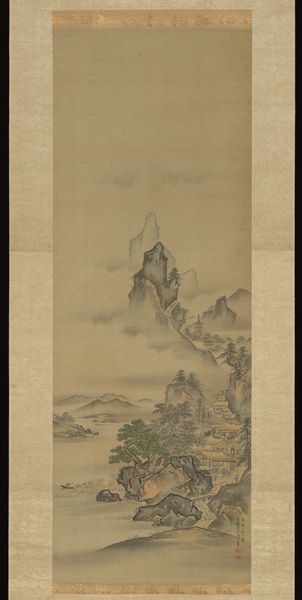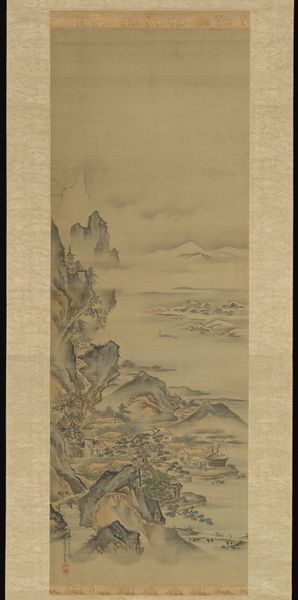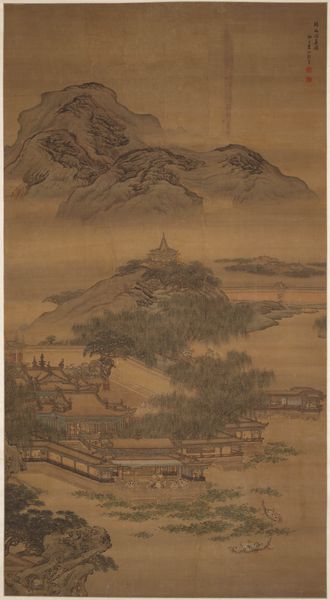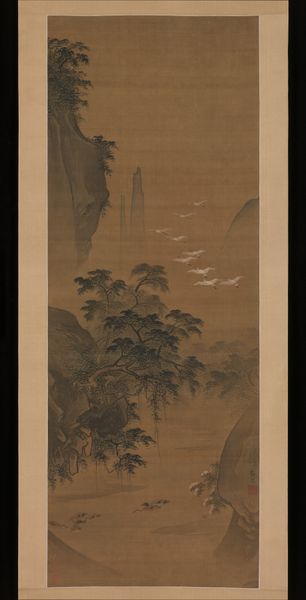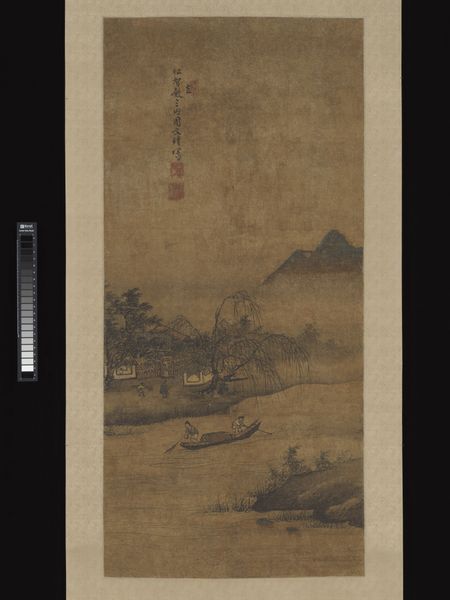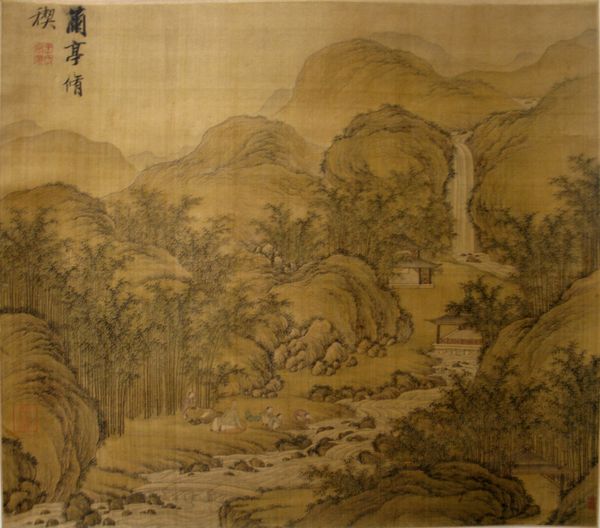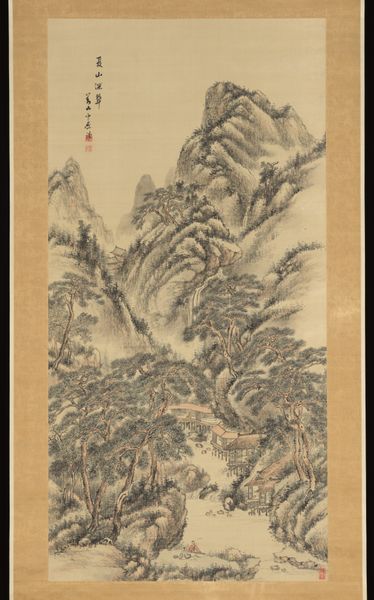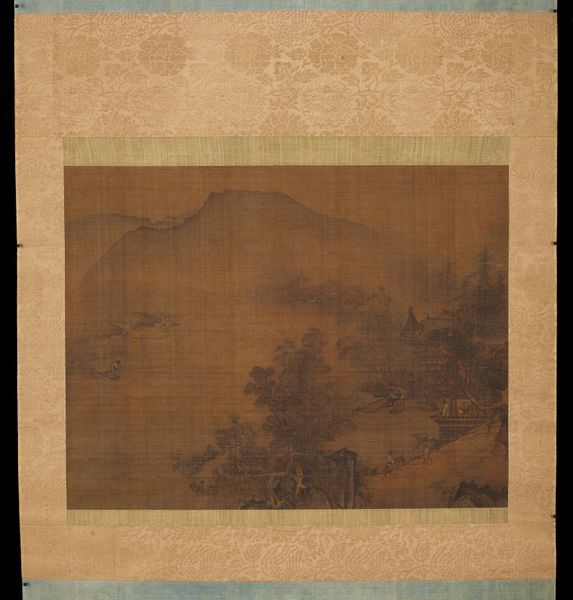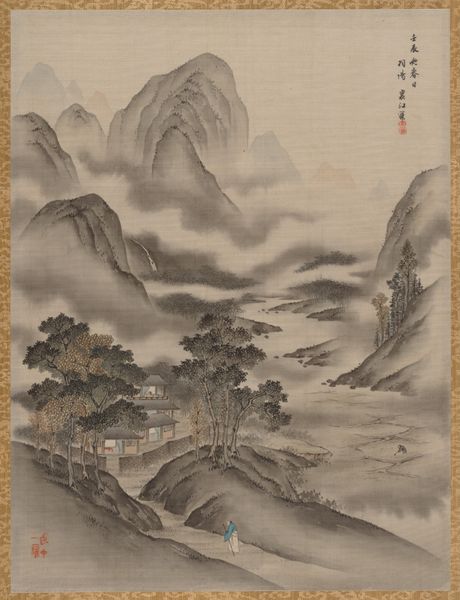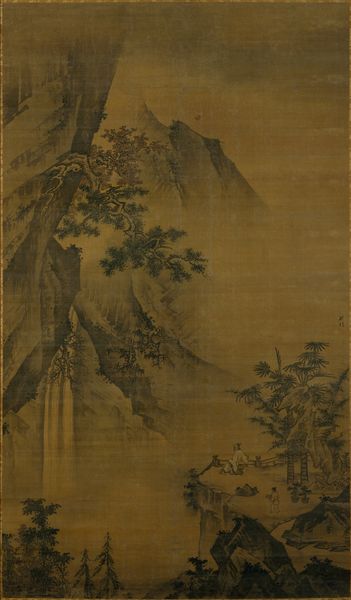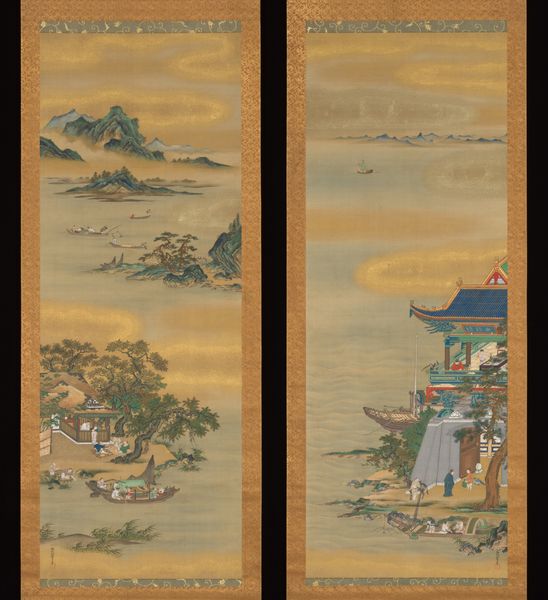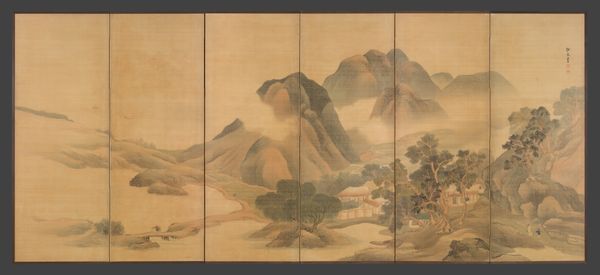
painting, hanging-scroll, ink
#
medieval
#
narrative-art
#
painting
#
asian-art
#
landscape
#
figuration
#
hanging-scroll
#
ink
Dimensions: 98 11/16 x 48 3/8 in. (250.67 x 122.87 cm) (image)
Copyright: Public Domain
Curator: Gazing at this hanging scroll, I immediately feel this almost sepia-toned wash of tranquility. Like a forgotten dream. Editor: And what a dream it is. This piece, called "Riverside Scene with Scholar and Fisherman," likely dates back to around 1500. The artist is Liu Jun, and it's rendered in ink on paper. Now held by the Minneapolis Institute of Art. Curator: Ink on paper. Such delicate things, and yet so durable, no? It’s funny; despite being a landscape, I find my eyes drawn immediately to that little pavilion jutting out over the water. Makes me wonder who lives there. Editor: Indeed. Those architectural details are interesting—the structure straddling the terrestrial and aquatic realms certainly implies a certain privileged access to nature, doesn’t it? One can almost imagine this painting hanging in a similar pavilion, reflecting the aspirations of its patron. The figures of the scholar in his riverside pavilion and the fisherman below at the bottom remind us that in a Confucian social structure scholars were the elite and fisherman were not. Curator: I hadn’t considered that element of class dynamics—so the artist strategically places them, framing a broader societal observation? Editor: It's plausible. Think about the traditional role of landscape painting at the time. While ostensibly about nature, it often served as a medium for conveying social and political ideals, commenting on the right ordering of things. The Fisherman and Scholar could also speak about the “simple” life outside of court vs court life and political power. Curator: So, is it possible that the viewer is not to think that he/she is looking at an “accurate depiction” of place, but that instead he/she has stumbled upon some social contract visualized through landscape. Editor: Absolutely, and with its display within the setting of a museum, such nuances in reception continue to shift. Museums shape how we understand works like this, creating historical narratives around the art and the artist. What are we really seeing here if not also some commentary of how we in the present see class difference and art through a nostalgic image of pre-modern China? Curator: Nostalgia, that's precisely the right word to frame my own relationship with this work. A perfect reminder of the power of art to be both an image of its own time and an image of our own evolving perception. Editor: Precisely. "Riverside Scene" encapsulates so much: social hierarchy, philosophical longing, and of course the power of a museum to recontextualize all of that. It provides such a striking visual meditation that leaves much for interpretation.
